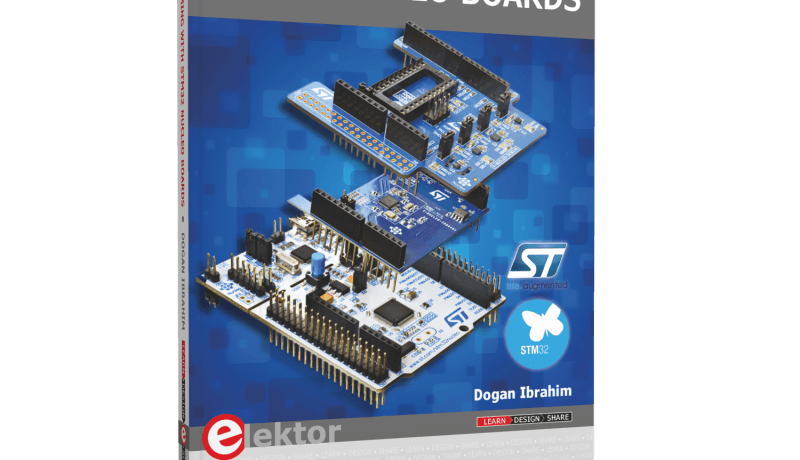Book Review: Programming with STM32 Nucleo Boards
February 20, 2019
on
on

Here comes a luxury problem! One of the stronger factors discouraging potential users to opt for STMicroelectronics microcontrollers traditionally has been: there are too many to choose from. Some people find this fascinating and a sign of constant technological progress, while others are in constant uncertainly as to which ‘STM32’ device or board is the best for the application at hand. Frankly, with STMicro’s enormous product range it’s easy to lose count of the number of ARM and ARM-Cortex based processors.
Development boards from each class are briefly described, highlighting in particular their power consumption, relative speed and cost. Some of these dev boards are Arduino compatible which should ease acceptance by beginners. Again the author does a good job here to clarify in a few pages the bewildering use of STM32 L processors in the “low-end” range, of Cortex M0+, M3 and M4 in the “middle” range, and of Cortex M3, M4 and M7 in the “high-end” range, all sprinkled across the Nucleo platform.
Eventually and sadly with not much in the way of technical arguments, the Nucleo L476RG dev board is put forward by the author for the experiments in this book. With a total of 1 Mbytes of Flash/RAM memory the ‘476 is the top product in the Nucleo-64 range. It’s a 64-pin ultra-low power board with ST Morpho as well as Arduino I/O connectors. The top side of the board (photo) contains the “ST Link” circuitry, which is basically the same for all Nucleo development boards. It can be cut off but then you lose the ability to power the system through the mini USB port.
Can’t see the (ST) micro for the trees
It’s exactly the above problem that author Dogan Ibrahim tackles and kills with great success right in the first chapter of his book. In less than 20 pages he manages to present the first overview of Nucleo boards I actually found enlightening rather than confounding or over the top in detail as in STMicroelectronics’ own publications. The main groups are:- Nucleo-32
- Nucleo-64
- Nucleo-144
Development boards from each class are briefly described, highlighting in particular their power consumption, relative speed and cost. Some of these dev boards are Arduino compatible which should ease acceptance by beginners. Again the author does a good job here to clarify in a few pages the bewildering use of STM32 L processors in the “low-end” range, of Cortex M0+, M3 and M4 in the “middle” range, and of Cortex M3, M4 and M7 in the “high-end” range, all sprinkled across the Nucleo platform.
Eventually and sadly with not much in the way of technical arguments, the Nucleo L476RG dev board is put forward by the author for the experiments in this book. With a total of 1 Mbytes of Flash/RAM memory the ‘476 is the top product in the Nucleo-64 range. It’s a 64-pin ultra-low power board with ST Morpho as well as Arduino I/O connectors. The top side of the board (photo) contains the “ST Link” circuitry, which is basically the same for all Nucleo development boards. It can be cut off but then you lose the ability to power the system through the mini USB port.

Insider’s Tip
STMicroelectronics wield a powerful promotional distribution system for their development boards. In fact it’s so powerful you will find it hard to leave a trade show like embedded world or electronica without “some thing STM32” or Nucleo in your backpack.Read full article
Hide full article


Discussion (0 comments)